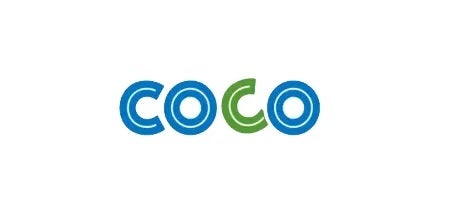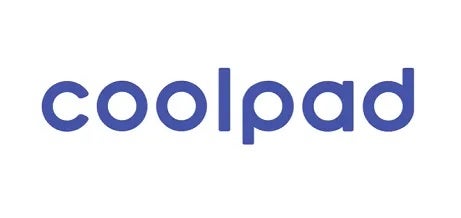All disaster recovery systems seek better RTO and RPO. The Sangfor disaster recovery optimization solution enhances the speed of data transmission by 3 times, significantly improving the backup speed of disaster recovery data and shortening backup time.
Product Advantages
Scenario Solutions
Disaster Recovery Optimization of Data Center
Cloud Network for MNC
Sangfor cooperates with a cloud provider to provide a full path optimization solution for cross-country networks, solving high latency, high packet loss and instability issues, significantly boosting user work efficiency.
Hybrid WAN
Internet broadband replace all or part of leased line (Metro-E/MPLS/IPVPN) increasing bandwidth, reducing WAN investment and avoiding risk of single WAN link failure.
Application Acceleration
Sangfor WANO reduces the long response time in high latency WAN, also known as protocol chattiness, improving the business application experience by up to 10 times.
Satellite Optimization
User experience is often quite poor when using satellite link, due to high latency, high packet loss and limited bandwidth, with no relief to be found through costly bandwidth upgrades. WANO is the most cost effective solution to significantly improve user experience and accelerate satellite link.
Disaster Recovery Optimization of Data Center
All disaster recovery systems seek better RTO and RPO. The Sangfor disaster recovery optimization solution enhances the speed of data transmission by 3 times, significantly improving the backup speed of disaster recovery data and shortening backup time.
Cloud Network for MNC
Sangfor cooperates with a cloud provider to provide a full path optimization solution for cross-country networks, solving high latency, high packet loss and instability issues, significantly boosting user work efficiency.
Hybrid WAN
Internet broadband replace all or part of leased line (Metro-E/MPLS/IPVPN) increasing bandwidth, reducing WAN investment and avoiding risk of single WAN link failure.
Application Acceleration
Sangfor WANO reduces the long response time in high latency WAN, also known as protocol chattiness, improving the business application experience by up to 10 times.
Satellite Optimization
User experience is often quite poor when using satellite link, due to high latency, high packet loss and limited bandwidth, with no relief to be found through costly bandwidth upgrades. WANO is the most cost effective solution to significantly improve user experience and accelerate satellite link.
Sangfor WANO VPN Configuration Guidelines







Frequently Asked Question
Wide Area Network (WAN) optimization is the collection of techniques and technologies used to improve the efficiency of WAN data transmission, including the ability to prioritize traffic and guarantee a certain amount of available bandwidth for the most critical applications.
Advances in applications, cloud computing and other technologies are driving more and more traffic over the WAN. To meet this need for greater bandwidth, WAN optimization can make more efficient use of existing bandwidth and save the cost of purchasing additional bandwidth.
Latest Events

Sangfor Spotlights AI Infrastructure at DCCI Summit 2025 Hanoi
At DCCI Summit 2025 Hanoi, Sangfor shared AI-ready infrastructure insights and cloud strategies, drawing 2,000+ industry leaders with Viettel IDC.
Unlock the Future of Virtualization: Elevate Your Strategy Beyond VMware
Join our webinar to explore Sangfor’s Full-Stack Private Cloud, navigate VMware updates, and gain insights for a secure, cost-efficient, and innovative IT future.
New Sangfor aDesk VDI 5.9.6 Preview: The Smarter Choice for Virtual App & Desktop Solutions
Sangfor aDesk VDI 5.9.6 offers a competitive alternative to Citrix and VMware with improved Virtual App solutions and seamless migration tools. Join our webinar!
Latest Blog

Sangfor aDesk VDI vs Citrix: Choosing the Right VDI Solution for 2025
Compare Sangfor aDesk and Citrix XenDesktop/XenApp in 2025. Explore architecture, licensing, security, and user experience to choose the right VDI solution.
Sangfor HCI vs VMware: A Full Comparison for SMB IT Infrastructure in 2025
Compare Sangfor HCI and VMware head-to-head in 2025. See which HCI platform offers better simplicity, security, and value for growing IT environments.
Top VPS Hosting Providers for 2025 Compared
Discover the top VPS hosting providers in 2025. Compare features, uptime, and scalability to find the right virtual server for your business needs.
Latest News

Sangfor Backup Platform Powered by Veeam Sets to Deliver Effortless, Enterprise-Grade Data Resilience
Empower your business with Sangfor Backup Platform powered by Veeam—offering agentless backup, 1-click recovery, and simplified data management.
Sangfor Technologies Recognized as a Representative Vendor in the 2025 Gartner® Market Guide for Full-Stack Hyperconverged Infrastructure Software
Sangfor named a Representative Vendor in Gartner’s 2025 HCI Guide, highlighting its innovation, global growth, and hybrid cloud capabilities.
Sangfor Technologies Ranked as the Top 3 Largest HCIS Vendor by Revenue in Asia-Pacific for 2024 based on Gartner® Market Share Report
Sangfor ranked as a top 3 HCIS vendor by revenue in Asia-Pacific for 2024, based on Gartner® Market Share Report. Leading in cloud and cybersecurity solutions.




